
Drug Abuse Facts And Figures
A drug is misused when it is consumed in an amount or method that goes against medical advice. The term drug abuse covers a spectrum of circumstances — from using medication for a known medical condition but without direct medical supervision to drug dependency. In some cases there are impulsive behaviors associated with drug abuse. According to the National Survey of Drugs and Health, 9.3 percent of people aged 12 or above had misused one or more drugs in 2009. But only 11 percent of those got treatment for substance abuse at specialized centers. Young people aged 20 to 29 showed the highest rate of drug misuse. The most commonly misused drugs include barbiturates, anxiolytics and analgesics.
- Important notification about information and brand names used in this slideshow!
- Photo courtesy of Patrick Doheny by Flickr : www.flickr.com/photos/14132971@N05/1473109356/
- Clinical Pharmacology, Bennett and Brown
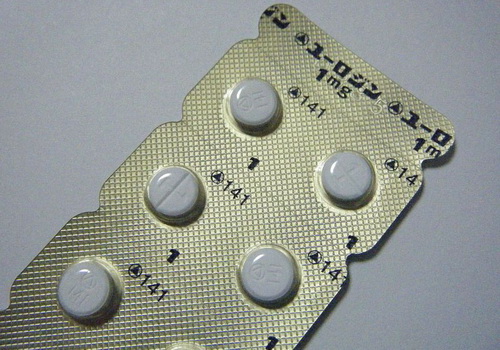
Barbiturates
Examples are Phenobarbitone, Methylphenobarbital and primidone. Barbiturates are a group of drugs that reduce anxiety, sedate, and prevent fits by causing a suppression of central nervous system function. There are oral, rectal and intravenous options. The intravenous form starts working most quickly. Barbiturates act in two ways. GABA (gamma amino butyric acid) is the main chemical transmitter in the human central nervous system with a suppressive function, while Glutamate is the main transmitter with an excitatory function. Barbiturates block Glutamate (excitation) and enhance GABA (inhibition). Barbiturates can cross the placenta affect a fetus fetus. If the mother was misusing barbiturates in early pregnancy, this may cause abnormalities in the fetus. During late pregnancy, it may cause withdrawal symptoms in the newborn when it is taken off the regular input of barbiturates through the placenta at delivery. An overdose of barbiturates may cause sluggishness, slowness of talking and thinking, breathing difficulty and in severe cases coma. Activated charcoal given immediately may reduce absorption. Naloxone or thiamine may be given to counteract certain effects. The overall treatment is only supportive.
- Important notification about information and brand names used in this slideshow!
- Photo courtesy of 欅 by Wikimedia Commons : en.wikipedia.org/wiki/File:Estazoram_(eurodin).jpg
- British National Formulary 52nd Edition, Clinical Phamacology Bennett and Brown
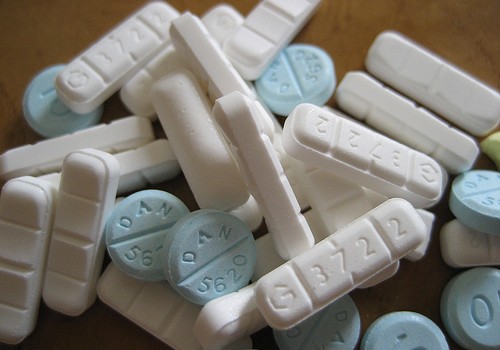
Valium, Xanax and Benzodiazepines
Examples: Zopiclone, Zolpidem, Temazepam, Alprazolam, Diazepam, Lorazepam. These drugs are used therapeutically to treat insomnia, anxiety, alcohol withdrawal, fits and as a pain killer. Oral, rectal, intravenous options are available. Benzodiazepines are absorbed quickly and become active soon after oral intake. The onset and duration of action varies greatly between different drugs. Alprazolam acts quickly for a short duration, while clonazepam has a long duration of action. Benzodiazepines act by enhancing the action of GABA. These drugs are altered and removed from the blood stream by the liver, and patients with liver diseases should therefore be cautious. Benzodiazepines can affect memory and balance. Some individuals may get aggressive (paradoxical behavioral disorders). Skin rashes, vomiting and diarrhea and reduced sex drive are other side effects. Animal and human studies have shown conclusive evidence of dependence. The drug should be tailed off after regular consumption to prevent severe withdrawal symptoms.
- Important notification about information and brand names used in this slideshow!
- Photo courtesy of Dean by Flickr : www.flickr.com/photos/deanslife/1358399695/
- British national Formulary 52nd Edition
- Clinical Pharmacology Bennett and Brown
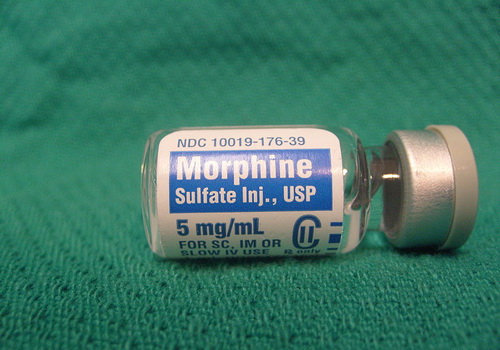
Codeine and Morphine
Codeine is 3-methylmorphine. Heroin is diacetylmorphine. Vicodin and percocet are a codeine-derivative combined with paracetamol. Morphine and its derivatives are used therapeutically to treat severe pain (reduces sensitivity to painful stimuli), cough (reduces cough reflex), anxiety (suppresses nervous system activity), agitation, and elevated blood pressure (dilates blood vessels). When morphine is taken orally, it is absorbed quickly but the actual amount of the drug entering the circulation is small. These drugs are removed by both liver and kidneys — patients with liver or kidney diseases should avoid them whenever possible. A morphine overdose will cause respiratory arrest and Naloxone can be life-saving. Long-term use of morphine-related drugs will cause tolerance (the dose needed to get the same effect will increase over time). Sudden cessation of intake will cause withdrawal symptoms such as excessive sweating, vomiting, headache and more.
- Important notification about information and brand names used in this slideshow!
- Photo courtesy of Vaprotan by Wikimedia Commons : commons.wikimedia.org/wiki/File:Morphine_vial.JPG
- British National Formulary 52nd Edition
- Clinical Pharmacology Bennett and Brown
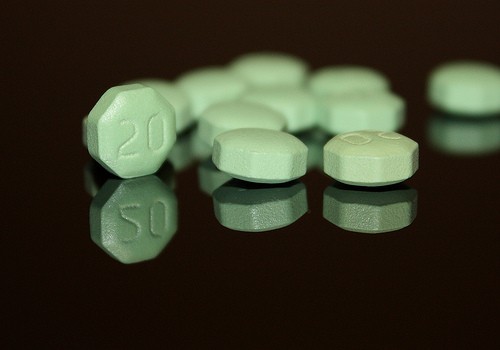
Cannabinoids and Cannabis
Examples: Dronabinol, Nabilone, Sativex, Dimethylheptylpyran, Levonantradol. This is a vast group of compounds which can be divided broadly into three groups depending to the origin. Endocannabinoids are formed inside the body (human or animal) naturally. Phytocannabinoids are formed in plants. Synthetic cannabinoids are produced artificially. Cannabis contains the most widely known cannabinoid tetrahydrocannabinol. Cannabinoids can be inhaled, swallowed, smoked, injected or inserted in the rectum. When taken orally, the effects take longer to start but last for four to 10 hours. Cannabinoids are altered in the liver and the resultant can remain in the body for weeks. Cannabis can cause euphoria, anxiety, hallucinations (with large amounts), red eyes, a dry mouth, an increased heart rate and muscle relaxation. Use of cannabinoids during pregnancy may result in low birth weight babies.
- Important notification about information and brand names used in this slideshow!
- Photo courtesy of Tom Walker by Flickr : www.flickr.com/photos/14079574@N05/4286030995/
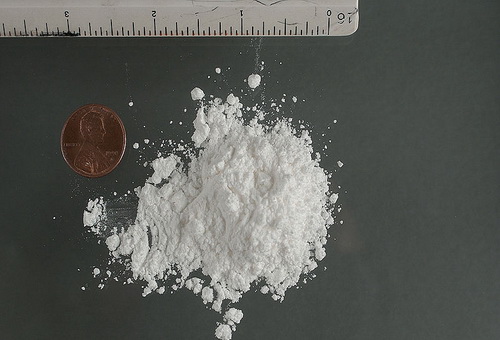
Cocaine
Cocaine is benzoylmethylecgonine extracted from the coca plant. It is pearly white when pure. But commonly, various substances are added to increase its weight. It can be consumed by rubbing it on the inside of the mouth, though nasal insufflation, injection, vaporization and as a suppository. Absorption is quick with each route of administration, with injection giving the highest blood levels. Cocaine acts by inhibiting the reentry of serotonine, norepinephrine, dopamine after secretion by nerve endings, ensuring continued nerve cell stimulation. It is extensive altered in the liver while one percent is removed unchanged with urine. When ingested with alcohol, cocaine is metabolized into cocaethylene which is more potent than cocaine itself. An overdose can result in seizures, hallucinations, abnormal heart rhythms, coma and death.
- Important notification about information and brand names used in this slideshow!
- Photo courtesy of Anetode by Wikimedia Commons : en.wikipedia.org/wiki/File:CocaineHydrochloridePowder.jpg
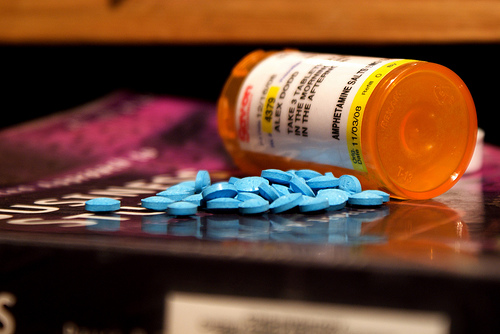
Amphetamines
Amphetamines are found in two forms; levamphetamine and dexamphetamine. They are stimulants used as a performance and brain-function enhancer. Amphetamines are commonly prescribed to children with ADHD (Attention Deficit Hyperactivity Disorder). Narcolepsy (inappropriate uncontrolled bouts of sleep) is another indication for its use. Amphetamines are commonly used in athletes as a performance enhancer and is detectable in urine. Amphetamines elevate blood pressure and cardiac output and are better avoided in patients with heart diseases or high blood pressure. They increase adrenaline and noradrenaline levels in the body enhancing the actions of other psychiatric drugs (Monoamine oxidase inhibitors). An overdose may cause kidney failure, heart failure, bleeding into brain matter (hemorrhagic stroke) and destruction of muscles (rhabdomyolysis).
- Important notification about information and brand names used in this slideshow!
- Photo courtesy of Alex Dodd by Flickr : www.flickr.com/photos/alexdoddphotography/3196151008/
- British National Formulary 52nd Edition
- Clinical Pharmacology Bennett and Brown
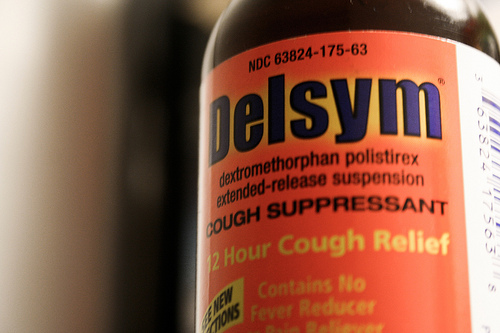
Dextromethorphan
Dextromethorphan is a common cough suppressant which can be obtained over the counter in some cases. Oral forms are commonly available in the form of syrups and pills. Dextromethorphan is absorbed into the blood stream quickly, and can enter the brain by crossing the blood brain barrier (semi- permeable barrier regulating entry of substances into the brain). It blocks glutamate (excitatory) action, enhances serotonin action, and is altered and removed from the blood stream by the liver. An overdose can lead to hallucinations, sedation, and elation as well as sweating, bloodshot eyes, and low blood pressure. In normal therapeutic doses, it can cause allergic reactions and this can also cause death due to anaphylaxis. Dextromethorphan can enhance the action of SSRI (selective serotonin reuptake inhibitors Ex: fluoxetine) and cause serotonin syndrome.
- Important notification about information and brand names used in this slideshow!
- Photo courtesy of Cavale Doom by Flickr : www.flickr.com/photos/cavale/3696467007/
- British National Formulary 52nd edition
- Clinical Pharmacology Bennett and Brown

Methylphenidate
Methylphenidate is a stimulant used to treat narcolepsy, ADHD (Attention Deficit Hyperactivity Disorder), depression and obesity. When taken orally, about half of the dose enters the blood stream. It is absorbed faster if it is taken with meals. It acts by inhibiting the re-entry of dopamine and norepinephrine into nerve cells after secretion. This ensures continued nerve cell activation. Known side effects of methylphenidate include sweating, hair loss, chest pain, headache, restlessness, weight loss, increased heart rate and dry mouth.Taking methylphenidate with alcohol increases its effects and the risk of liver failure. Methylphenidate should not be taken together with monoamine oxidase inhibitors and tricyclic antidepressants. Retrospective studies have shown drastic effects of methylphenidate ingestion during pregnancy. Taking an overdose of methylphenidate may not result in any symptoms. Some patients may get seizures, hallucinations, lethargy, abnormal heart rhythms and fluctuating blood pressure. An overdose is rarely fatal.
- Important notification about information and brand names used in this slideshow!
- Photo courtesy of ADHD Center by Flickr : www.flickr.com/photos/adhd/3274324090/
- British National Formulary 52nd Edition
- Clinical Pharmacology Bennett and Brown

Gamma Hydroxybutyrate (Ecstasy, Mills, Liquid X, Fantasy)
This compound is formed naturally in the nervous system of animals and is also found in wine and citrus fruits. Medically, it can be used to treat narcolepsy, alcohol dependence, sleeplessness and to increase performance. Studies have shown that it may increase secretion of human growth hormone. It is known to cause disinhibition, elation and increased sensuality. In higher doses it can cause nausea, vomiting, diarrhea, sweating, drowsiness, loss of consciousness and death. In doses above 3500mg, gamma hydroxybutrate can cause loss of consciousness, breathing difficulties and cardiac arrest. Ingesting gamma hydroxybutrate with alcohol will enhance its effects and cause a deep sleep. If vomiting occurs during this deep sleep, aspiration will result in death. Overdoses are very difficult to treat.
- Important notification about information and brand names used in this slideshow!
- Photo courtesy of Michael B. by Flickr : www.flickr.com/photos/aboyandhisbike/2169992591/
- British National Formulary 52nd edition
- Clinical Pharmacology Bennett and Brown






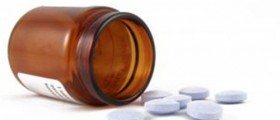












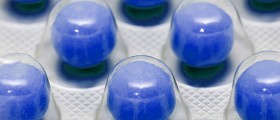
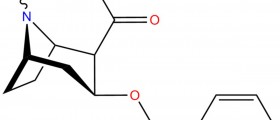






Your thoughts on this
Loading...